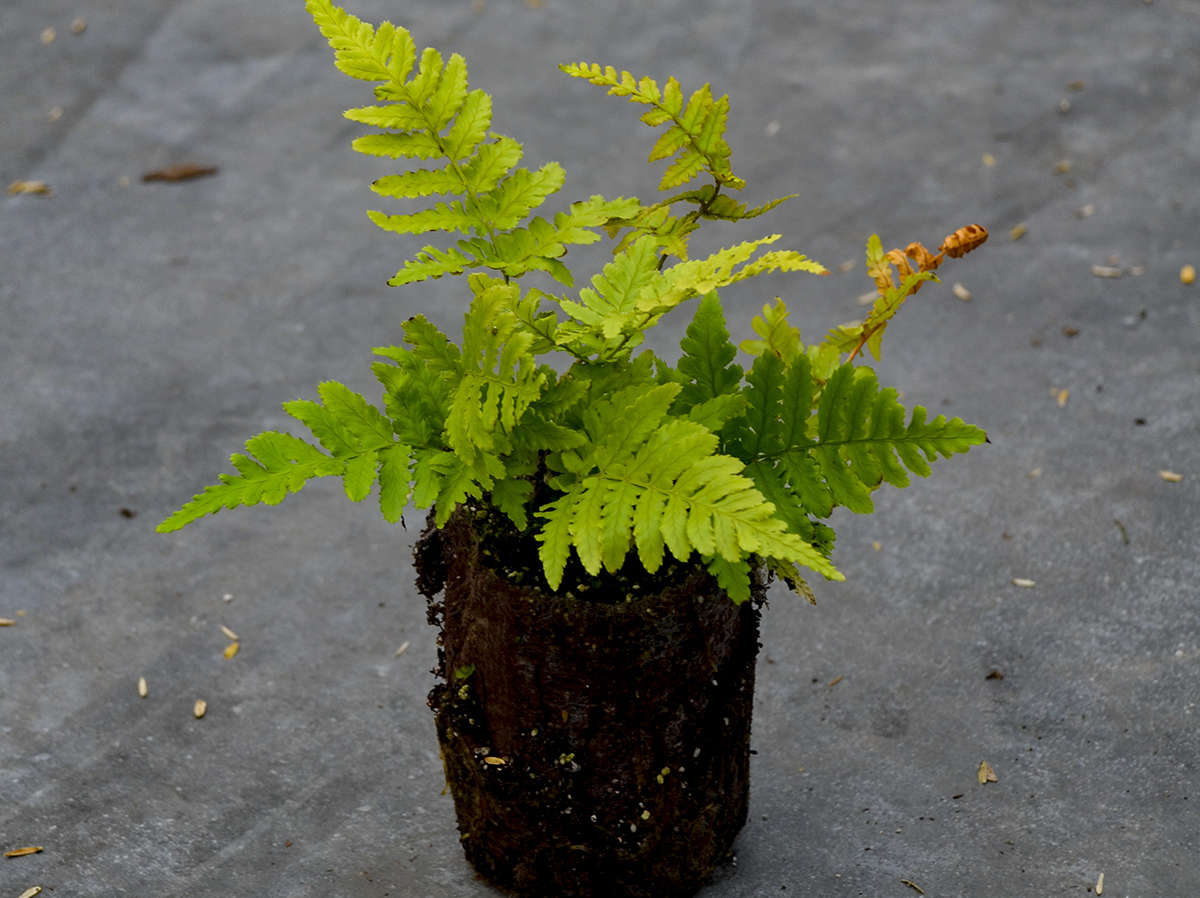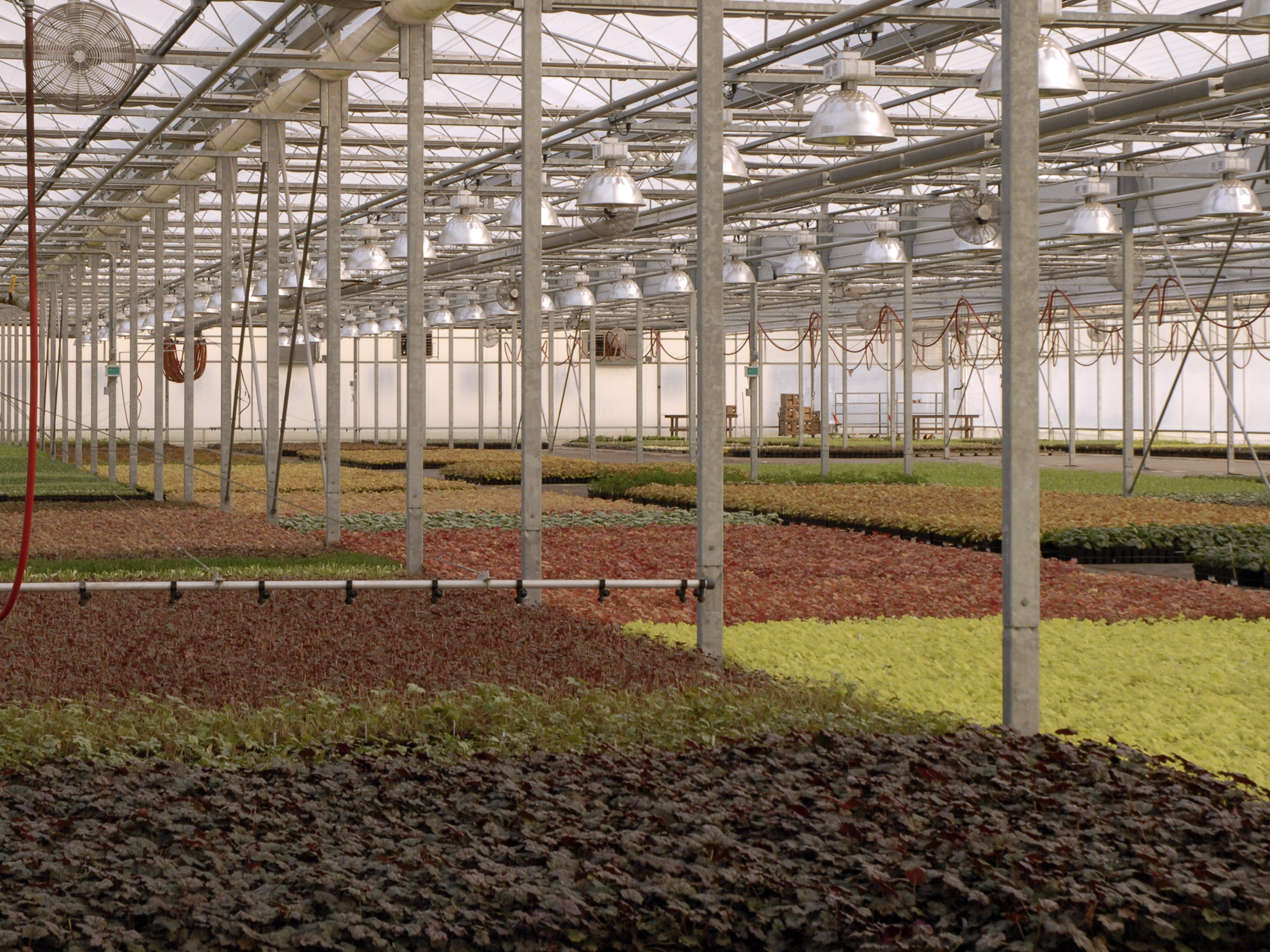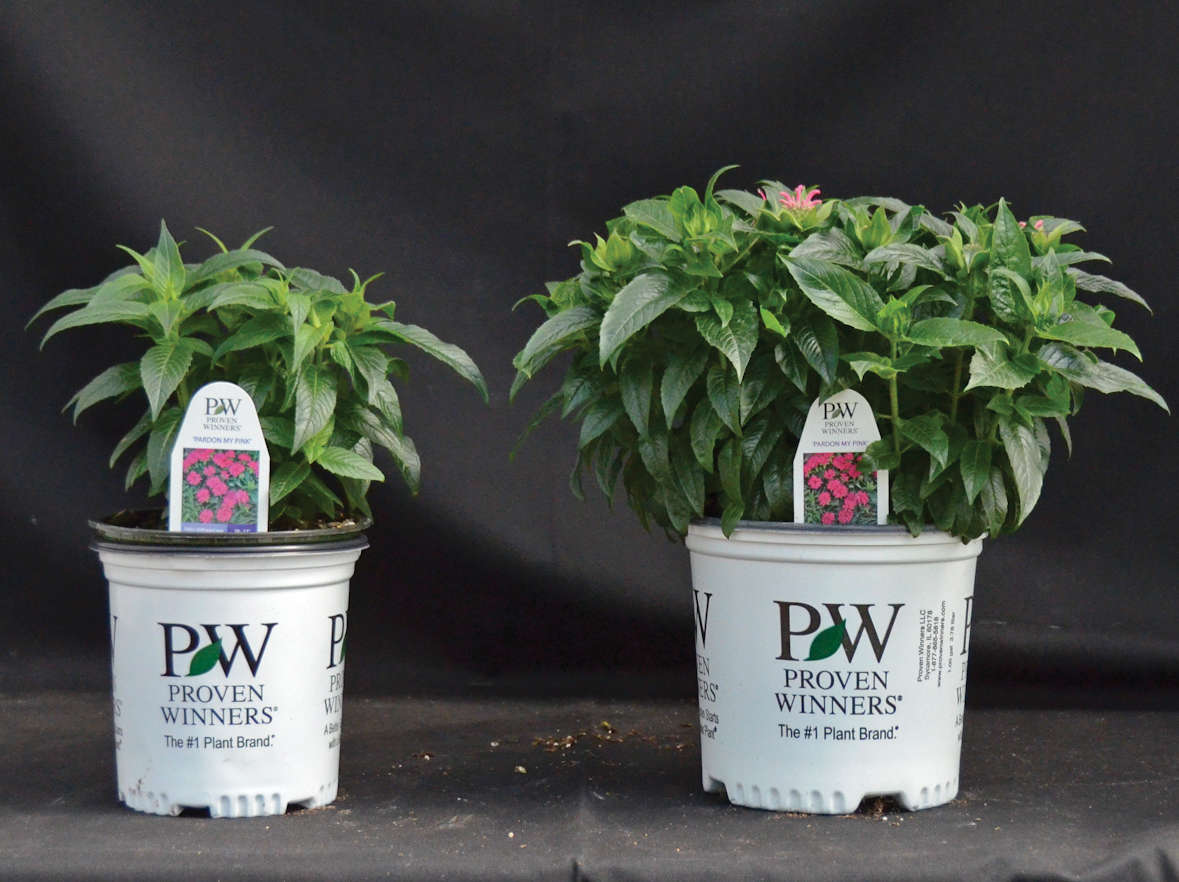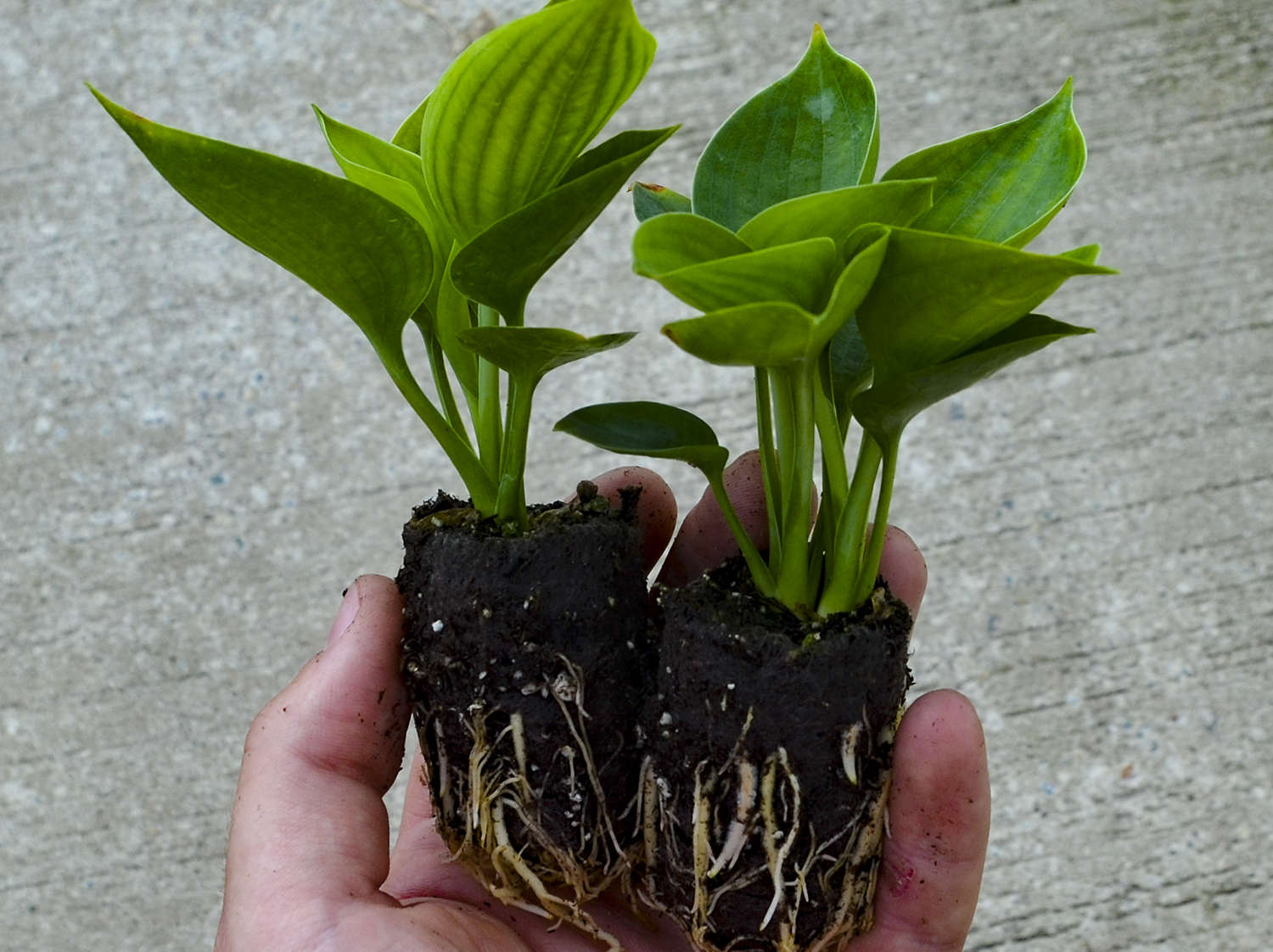Water – The Critical Factor to Succeed with Elle Plugs
-
1.
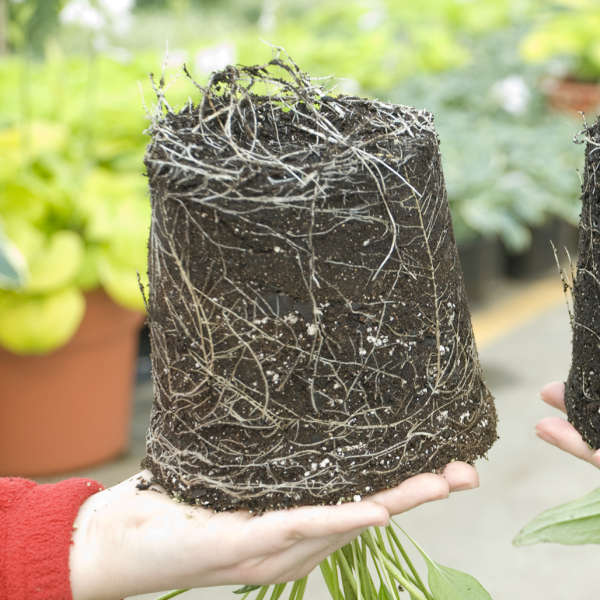
Initial Findings
In order to help our customers to be more successful in growing finished plants from our Elle Plugs, we have conducted trials to determine the optimum cultural conditions. In our trials, we worked to resolve the issues that customers have brought to us when growing plants from Elle Plugs. These articles presents our findings which are in addition to what has been published in our Simple, Sensible, Solutions® guide. Even more cultural information can be found on our Cultural Sheets online. It is important to note that the knowledge gained from these trials can be equally applied to plants grown in Elle Plugs or in traditional plugs.
-
2.
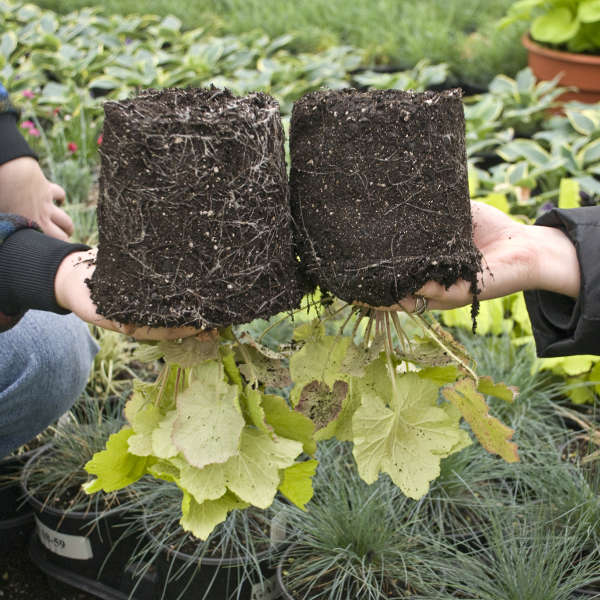
Photo A
Photo A shows two Heucheras which were potted up 5 weeks ago from a 20ct (65mm) Elle Plug. The plant on the left originated from a moist Elle Plug that had been watered with a wetting agent before it was potted up. The plant on the right originated from an Elle Plug that had been allowed to dry out before potting up. As you can see, the plant that started from a moist Elle Plug is showing significantly more root growth at 5 weeks than its dry counterpart. Though the top growth appears to be similar for both plants, the difference in root growth is significant. If grown on to a finished plant, it is likely that the plant with good top growth but few roots will be delayed in finishing, while the plant that is well-rooted and has good top growth will prosper.
-
3.
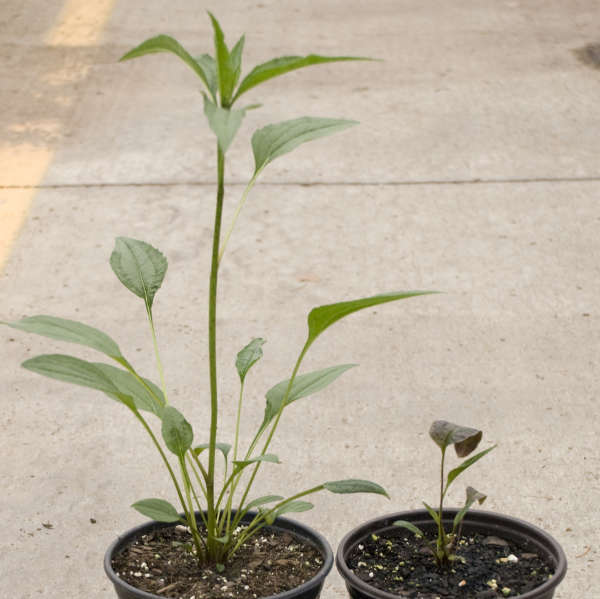
Photo B
Photo B shows two Echinaceas which were potted up 5 weeks ago from a 30ct (50mm) Elle Plug. The plant on the left originated from a moist Elle Plug that had been watered with a wetting agent before it was potted up. The plant on the right originated from an Elle Plug that had been allowed to dry out before potting up. While the moist plug is thriving, the dry plug shows weak growth. If grown on to a finished plant, it is likely that the moist plug will reach its potential and the dry plug will be delayed in finishing or may fail. While this is an extreme example, it clearly demonstrates the importance of keeping the Elle Plug moist before transplanting.
-
4.
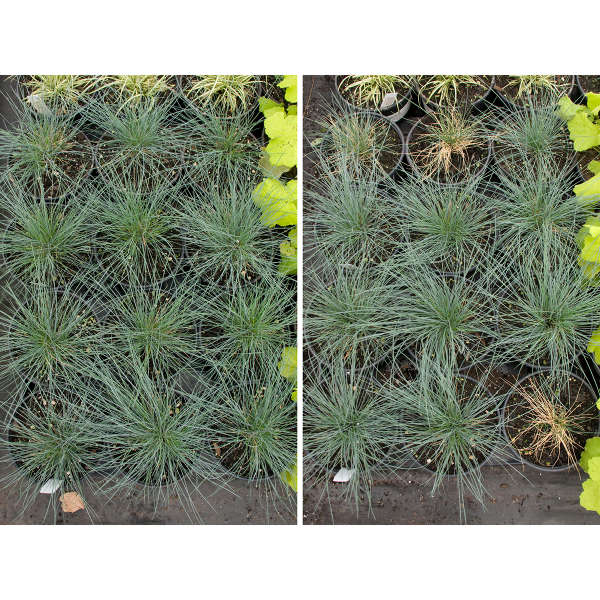
Photo C
Photo C shows a trial of Festuca. On the left are 12 plants that originated from moist Elle Plugs. On the right are 12 plants that originated from dry Elle Plugs. All plants were kept moist after they were planted. As you can see, 100% of those that were planted from moist Elle Plugs prospered. Of those that were planted from dry Elle Plugs, 75% prospered while 25% are performing poorly after just 5 weeks. Since Festuca is typically a drought tolerant plant, these results are a bit surprising. Perennials that are not as tolerant of dryness presumably would experience even greater losses. In addition to the trial described above, we are also testing the effect of plug moisture v. surrounding soil moisture. Our trials include every combination of plug and soil moisture, from wet to dry. In the few short weeks we have been conducting these trials, the importance of keeping Elle Plugs moist has already become apparent.
-
5.
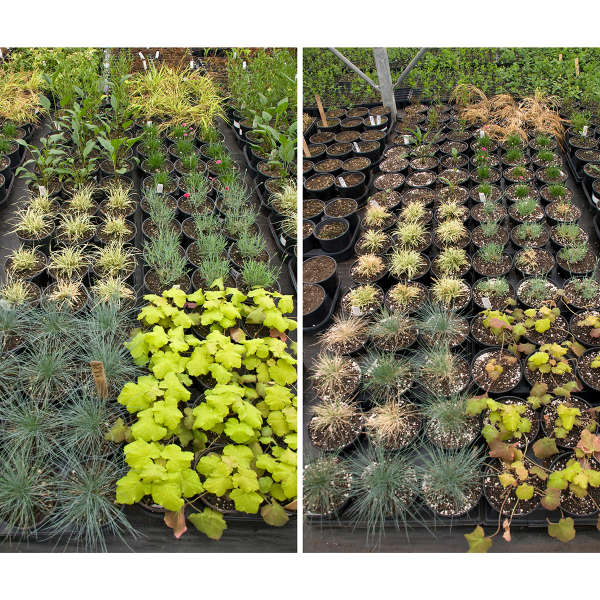
Photo D
Photo D shows a trial of 8 different kinds of perennials. In the trial pictured on the left, the plants originated from a moist to wet Elle Plug and were planted into moist to wet soil. The result after just a few short weeks is that 100% of the plants are performing very well and will likely reach their potential. At the end of this trial, we are predicting that 100% of these plants would be in saleable condition. In contrast, the photo on the right shows the same 8 varieties of perennials which originated from dry Elle Plugs and were planted into very dry soil. As you can see, none of the plants thus far are performing satisfactorily. While some are still living, it is likely that few will reach their potential. At the end of this trial, we are predicting that few plants would be in saleable condition. Though our trials are still ongoing, we feel confident in claiming that keeping Elle Plugs moist is absolutely critical to achieving optimum performance. In addition, we feel that traditional plugs (those not grown in Elles) also perform best when kept consistently moist. We are currently conducting further trials to determine the necessary cultural practices for producing the highest quality finished plants from our plugs. Please check back for further information about these trials in upcoming newsletters and on our website.
-
6.
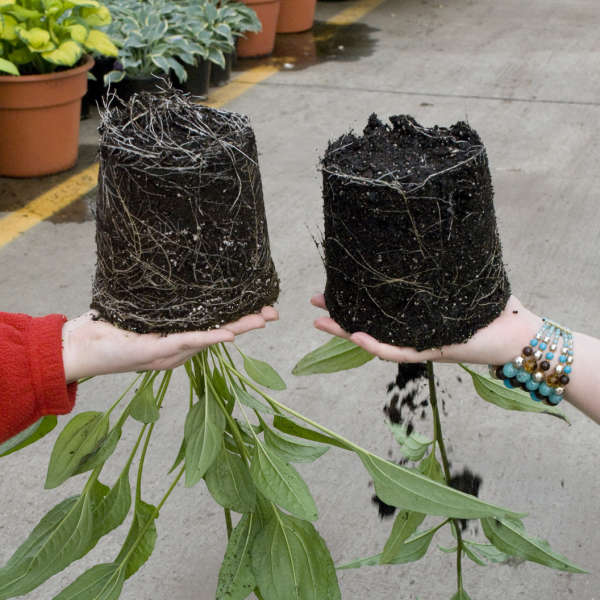
Photo E
Photo E shows two Echinaceas which were potted up from 30ct (50mm) Elle Plugs 12 weeks ago. The plant on the left originated from a moist Elle Plug that had been watered with a wetting agent before it was potted up. The plant on the right originated from an Elle Plug that had been allowed to dry out before potting up. Both plants were watered equally after being potted up for the 12 week period. As you can see, the plug that started out moist produced a much stronger root system compared to the dry plug.
-
7.
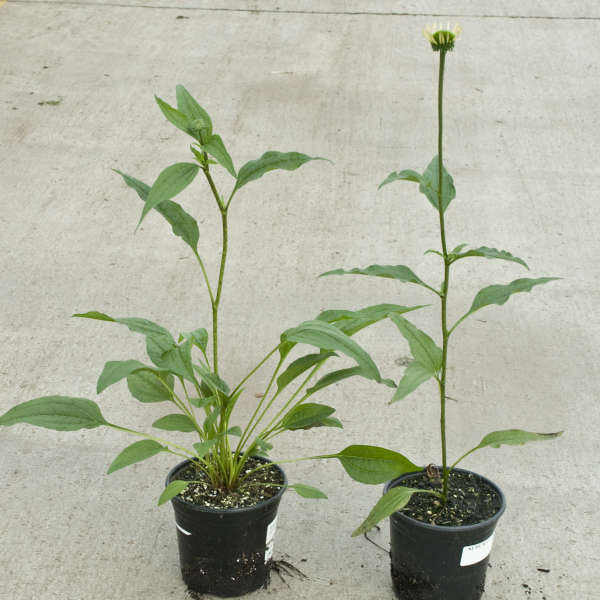
Photo F
Photo F shows the same two Echinaceas as in Photo A. The plant on the left originated from a moist Elle Plug while the plant on the right originated from a dry Elle Plug. After 12 weeks, the plant that originated in the moist plug not only produced a stronger root system, but also has much fuller top growth and a bigger crown than the plant that originated from the dry plug. It has a much higher perceived value and is ready to sell while the plant on the right still needs more time to finish. Remember, the only difference was the moisture level of the original Elle Plug before it was potted up into the 1-gal containers. Both plants received the same amount of moisture during the 12 week growing period. This demonstrates how critical it is for you to water your Elle Plugs before you pot them up.
-
8.
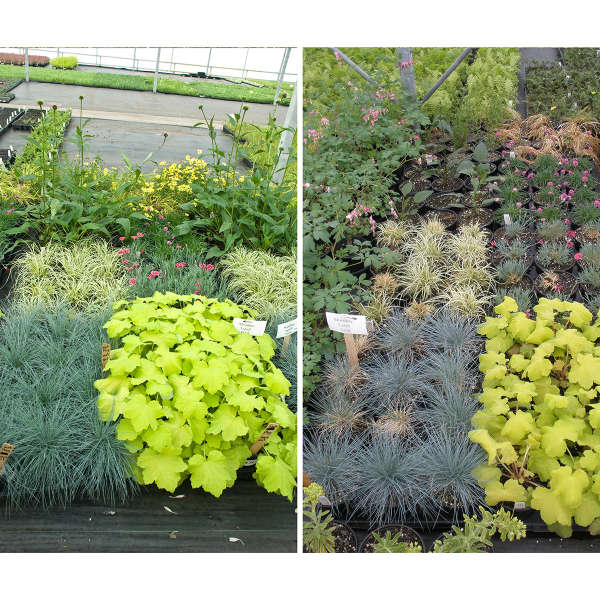
Photo G
Photo G shows an overview of the two extremes of our trial. On the left are plants which originated from moist Elle Plugs and were planted into moist soil in 1-gal containers. On the right are plants which originated from dry Elle Plugs and were planted into dry soil in 1-gal containers. All plants received the same amount of water after they were potted up for the 12 week period. At the end of the 12 week trial, all of the plants which originated from moist Elle Plugs and were planted into moist soil are well-rooted, have full top growth, and are ready to sell. Conversely, of all the plants in the dry trial, the Coreopsis and Hakonechloa have died and the Echinaceas are struggling severely. The Heuchera, Carex, and Dianthus are of mediocre quality. Somewhat surprisingly, the Festuca and Armeria are faring better than expected though they have not met the higher quality of their counterparts in the moist plugs.
-
9.
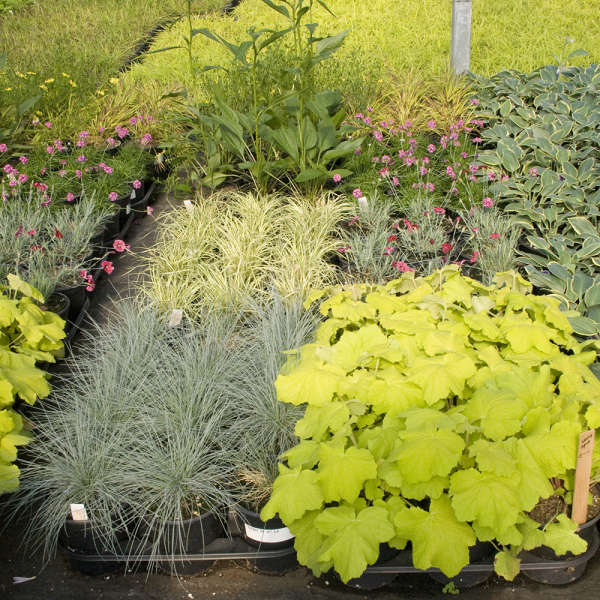
Conclusions
The most critical factor in success with Elle Plugs is water. Elle Plugs have proven to be better than traditional plugs because they transplant and finish faster. However, they also dry out faster than typical plugs until they begin rooting into the surrounding soil. The biodegradable paper sleeve acts as a wick, drawing away excess moisture from the roots and replacing it with oxygen which is essential to strong root development. It is essential that Elle Plugs not be allowed to dry out during any stage of production. We do our very best to keep the plugs moist during our production and shipping cycles so they arrive to our customers in good condition. It is critical that our customers check the moisture level of the plugs when they arrive and again before transplanting to ensure they remain evenly moist. From these trials, we can conclude that the best practice for growing Elle Plugs is to never let them dry out during any stage of production. They should be watered well before they are potted up and the receiving soil should be moist as well. You should continue to water your potted plants on a regular basis and not let them dry out.
